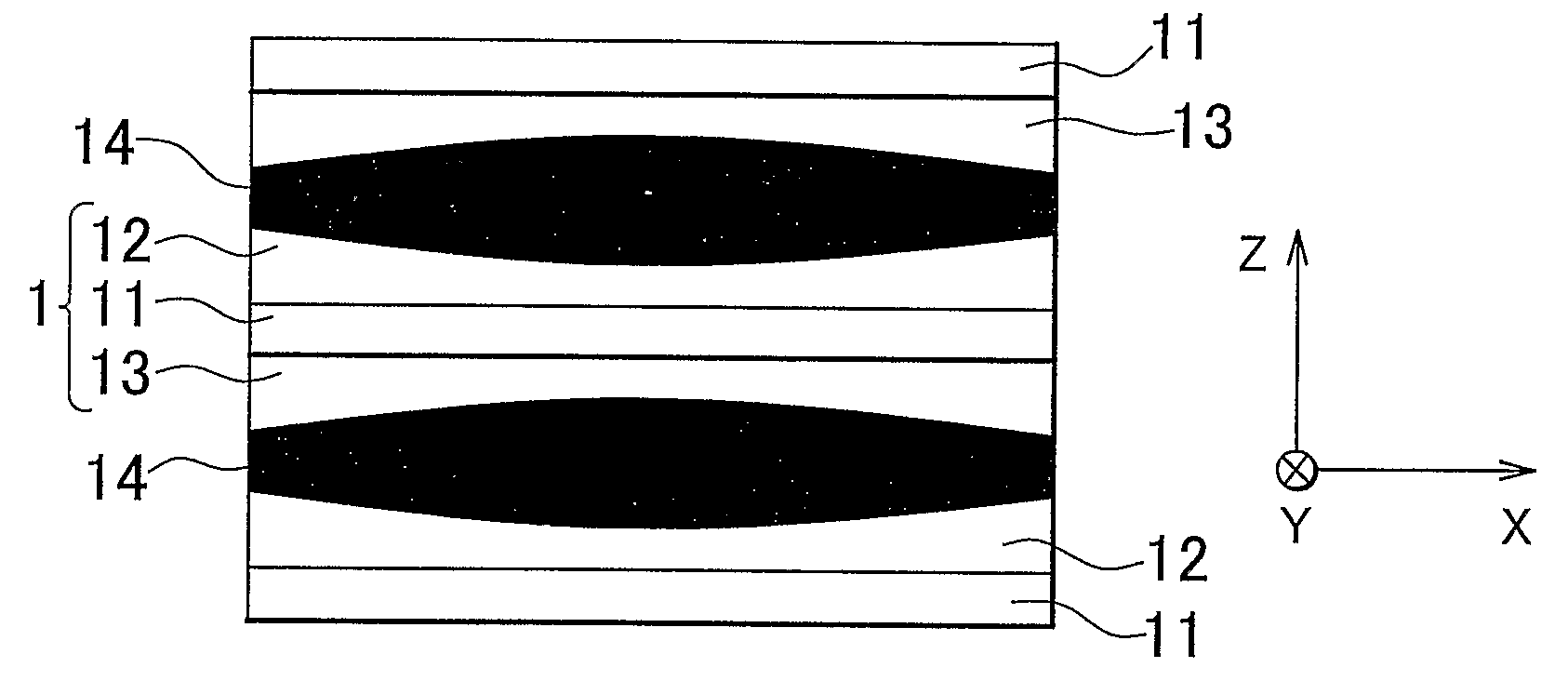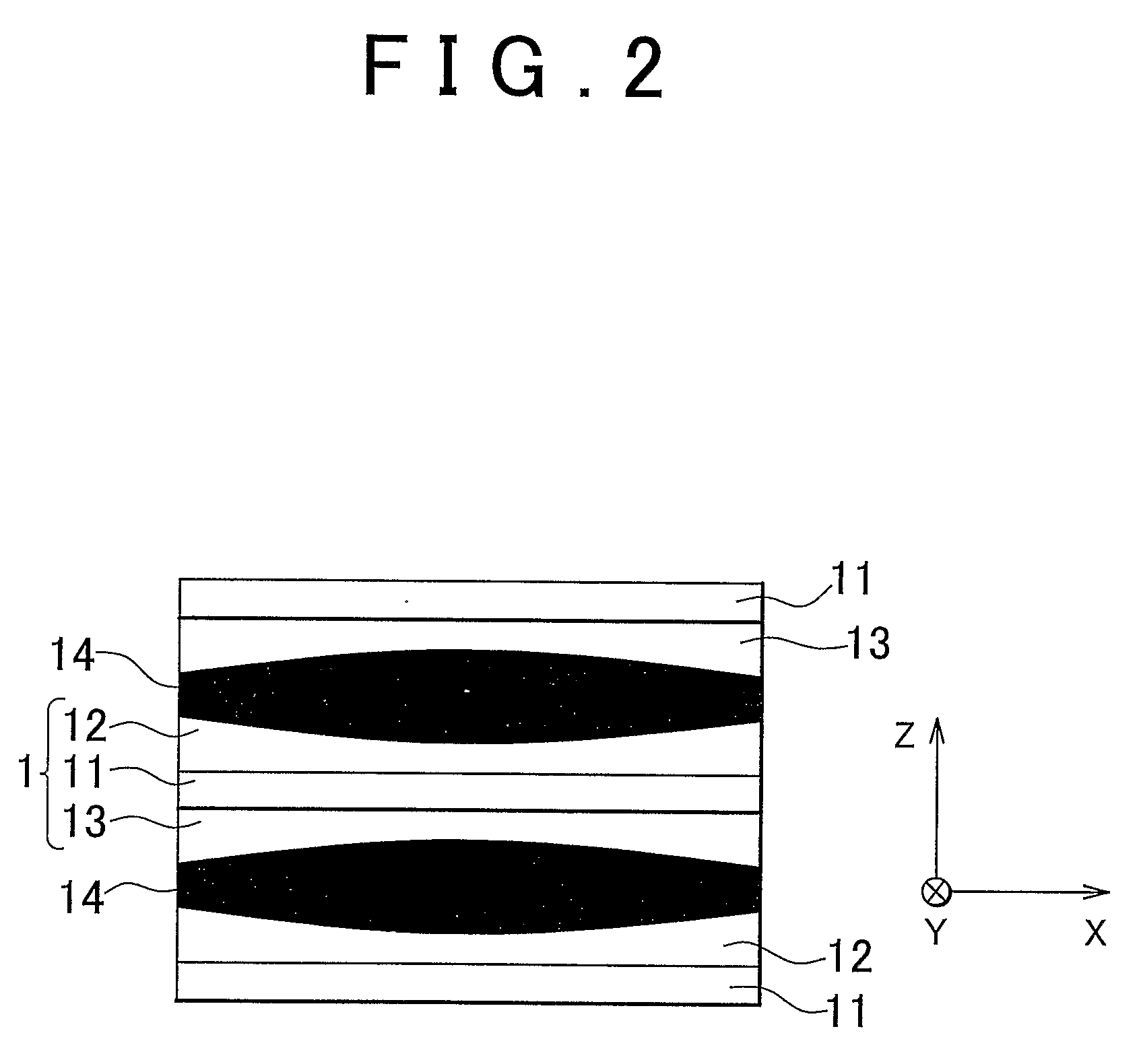Electrode for electric storage device and electric storage device
a technology of electric storage device and electrode, which is applied in the direction of cell components, flat cell grouping, sustainable manufacturing/processing, etc., can solve the problems inability to suppress the temperature variation in the region, and the possibility of small cell active material being used for charging/discharging, etc., to suppress the temperature variation on the surface of the electrode, increase the area of the current collector, and suppress the effect of temperature variation
- Summary
- Abstract
- Description
- Claims
- Application Information
AI Technical Summary
Benefits of technology
Problems solved by technology
Method used
Image
Examples
first embodiment
[0044]A bipolar battery, which is an electric storage device according to a first embodiment of the invention, will be described with reference to FIG. 1 and FIG. 2. FIG. 1 shows a front view of a bipolar electrode that is used in a bipolar battery according to the embodiment, and diagrams showing the relation between positions in the bipolar electrode, and the thickness of an electrode layer. FIG. 2 shows a lateral view of a portion of the bipolar battery that has a structure in which the bipolar electrodes are stacked.
[0045]In the bipolar electrode, a positive electrode layer is formed on one surface of a current collector, and a negative electrode layer is formed on the other surface of the current collector. FIG. 1 shows the one surface of the bipolar electrode (i.e., the surface on which the positive electrode layer is formed).
[0046]In the bipolar electrode according to the embodiment, the positive electrode layer and the negative electrode layer have the same configuration.
[00...
second embodiment
[0095]Next, a bipolar battery according to a second embodiment will be described with reference to FIG. 7 and FIG. 8. FIG. 7 shows a front view of a bipolar electrode used in the bipolar battery according to the second embodiment, and diagrams showing the relation between the density of the active material contained in the electrode layer in the bipolar electrode, and the positions in the bipolar electrode. FIG. 8 is a lateral view (schematic view) of the bipolar battery according to the embodiment.
[0096]In the above-described first embodiment, the thickness of the electrode layer varies in the X direction and Y direction of the bipolar electrode. In the second embodiment, the electrode layer has a substantially uniform thickness (when manufacturing tolerance is taken into account), and the density of the active material contained in the electrode layer varies. Hereinafter, more specific description will be made.
[0097]In a bipolar electrode 3 according to the embodiment, a positive ...
PUM
| Property | Measurement | Unit |
|---|---|---|
| ion-conductive | aaaaa | aaaaa |
| current density | aaaaa | aaaaa |
| thickness | aaaaa | aaaaa |
Abstract
Description
Claims
Application Information
 Login to View More
Login to View More - R&D
- Intellectual Property
- Life Sciences
- Materials
- Tech Scout
- Unparalleled Data Quality
- Higher Quality Content
- 60% Fewer Hallucinations
Browse by: Latest US Patents, China's latest patents, Technical Efficacy Thesaurus, Application Domain, Technology Topic, Popular Technical Reports.
© 2025 PatSnap. All rights reserved.Legal|Privacy policy|Modern Slavery Act Transparency Statement|Sitemap|About US| Contact US: help@patsnap.com



